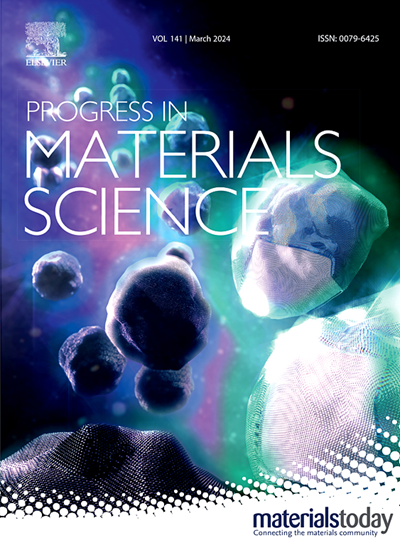用于生物医学应用的机械生物超材料的合理设计
IF 40
1区 材料科学
Q1 MATERIALS SCIENCE, MULTIDISCIPLINARY
引用次数: 0
摘要
机械生物超材料是一种新兴的工程结构,用于满足生物医学工程中复杂的机械和生物需求。这篇综述采用了一个新的视角,超越了传统的基于公式的方法,探索由生物启发、刺激响应和功能驱动因素塑造的设计灵感。我们引入了一个新的分类框架来组织这些元结构,从简单到复杂,从静态到动态,涵盖了广泛的结构设计。这种基于结构的分类强调,主要是结构而不是材料成分决定了这些材料独特的机械和生物性能。此外,我们还讨论了人工智能在推进机械生物超材料设计、促进正向和逆设计方法、增材制造和预测建模方面的变革作用。通过建立术语“机械生物超材料”,本综述将结构设计与生物医学应用在四个关键领域联系起来:工程微环境、组织植入物、外部设备和侵入性设备。这种整体方法旨在为不同的受众创造可访问的见解,连接工程和临床观点,并说明这些元结构如何影响细胞,组织和器官行为。最后,路线图概述了未来的发展方向,提出了医疗保健领域机械生物超材料的进化途径。这些创新具有推动下一代生物医学应用的潜力,为患者提供更好的治疗效果,并促进创造性的进步。本文章由计算机程序翻译,如有差异,请以英文原文为准。
Rational design of mechanical bio-metamaterials for biomedical applications
Mechanical bio-metamaterials are an emerging class of engineered structures tailored to meet complex mechanical and biological demands in biomedical engineering. This review adopts a new perspective, moving beyond traditional formula-based approaches to explore design inspirations shaped by bioinspired, stimuli-responsive, and function-driven factors. We introduce a novel classification framework that organizes these metastructures from simple to complex and from static to dynamic, encompassing a broad range of structural designs. This structural-based classification emphasizes that it is the structure, rather than the material composition, that primarily defines the unique mechanical and biological properties of these materials. Furthermore, we discuss the transformative role of Artificial Intelligence in advancing the design of mechanical bio-metamaterials, facilitating forward and inverse design approaches, additive manufacturing, and predictive modeling. By establishing the term “mechanical bio-metamaterials,” this review connects structural design to biomedical applications in four key areas: engineered microenvironments, tissue implants, external devices, and invasive devices. This holistic approach aims to create accessible insights for a diverse audience, bridging engineering and clinical perspectives and illustrating how these metastructures influence cellular, tissue and organ behaviors. Finally, a roadmap outlines future directions, proposing evolutionary pathways for mechanical bio-metamaterials in healthcare. These innovations hold the potential to drive next-generation biomedical applications, offering improved patient outcomes and fostering creative advancements.
求助全文
通过发布文献求助,成功后即可免费获取论文全文。
去求助
来源期刊

Progress in Materials Science
工程技术-材料科学:综合
CiteScore
59.60
自引率
0.80%
发文量
101
审稿时长
11.4 months
期刊介绍:
Progress in Materials Science is a journal that publishes authoritative and critical reviews of recent advances in the science of materials. The focus of the journal is on the fundamental aspects of materials science, particularly those concerning microstructure and nanostructure and their relationship to properties. Emphasis is also placed on the thermodynamics, kinetics, mechanisms, and modeling of processes within materials, as well as the understanding of material properties in engineering and other applications.
The journal welcomes reviews from authors who are active leaders in the field of materials science and have a strong scientific track record. Materials of interest include metallic, ceramic, polymeric, biological, medical, and composite materials in all forms.
Manuscripts submitted to Progress in Materials Science are generally longer than those found in other research journals. While the focus is on invited reviews, interested authors may submit a proposal for consideration. Non-invited manuscripts are required to be preceded by the submission of a proposal. Authors publishing in Progress in Materials Science have the option to publish their research via subscription or open access. Open access publication requires the author or research funder to meet a publication fee (APC).
Abstracting and indexing services for Progress in Materials Science include Current Contents, Science Citation Index Expanded, Materials Science Citation Index, Chemical Abstracts, Engineering Index, INSPEC, and Scopus.
 求助内容:
求助内容: 应助结果提醒方式:
应助结果提醒方式:


